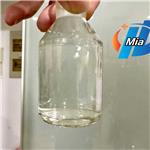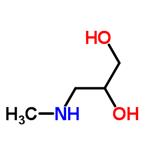Description
3-Methylamino-1,2-propanediol (MAPD) is a clear liquid with the chemical formula C
4H
11NO
2. It can be synthesized from allylamine and alkanolamine via a thermal process. It reacts with chloride to form methyl chloroacetate, which can then be converted into 3-methylamino-1,2-propanediol by reaction with methanol. The production process for this substance has been shown to generate low levels of hazardous substances such as polycyclic aromatic hydrocarbons (PAHs) and dioxins.
Chemical Properties
clear colorless to pale yellow viscous liquid
Uses
3-Methylamino-1,2-propanediol is a reactive compound that is used in the synthesis of organic acids. It is also used as an intermediate in the manufacture of polyethylene glycols and particle coatings.
Definition
ChEBI: 3-methylamino-1,2-propanediol is a secondary amine.
Preparation
3-Methylamino-1,2-propanediol (MAPD) is synthesized by reacting 3-chloro-1,2-propanediol (CPD) with
monomethyl amine in alkaline environment by adding sodium hydroxide.
Afterwards, the product undergoes a series of purification steps.

N-Methyl-1-amino-2,3-propandiol (45A) Methylamine (172ml of a 40% solution in water, 2 mol) was cooled to 0 °C and 2,3-epoxy-1-propanol (25g, 0.34mol) was added at a rate to maintain the temperature at or below 10 °C. The mixture was stirred for 3 hours at 0 °C. Excess methylamine and water was evaporated in vacuo and the product was purified by distillation at 103-105 °C, at 0.5 mm Hg, to give the compound 3-Methylamino-1,2-propanediol.

Hazard
3-Methylamino-1,2-propanediol is danger.
H314 (32.76%): Causes severe skin burns and eye damage [Danger Skin corrosion/irritation]
H315 (67.24%): Causes skin irritation [Warning Skin corrosion/irritation]
H319 (65.52%): Causes serious eye irritation [Warning Serious eye damage/eye irritation]
H335 (100%): May cause respiratory irritation [Warning Specific target organ toxicity, single exposure; Respiratory tract irritation]







